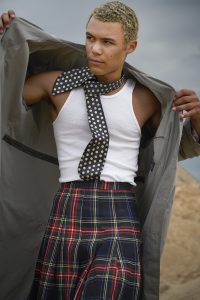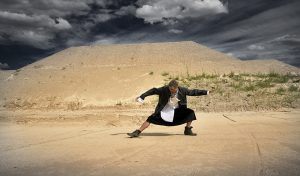



Beyond western cultures mans apparel can be seen to include skirts and garments that may resemble skirts, for example the male kimono, kilt, tunics, wraps, robes and other clothing that is non trouser. Many costumes from different cultures and traditions throughout history were made for ease of movement and often more for practical reasons than for fashionable ones, although this played a part depending on the position in society.
In Renaissance Europe the wearing of trousers wasn’t seen as acceptable, trousers if worn would puff out to look more like a skirt and was worn by 16th and 17th century noblemen. Until the 19th century young children in Europe wore skirts regardless of their gender.
Kilts, seen by many as a skirt, although male Scots would have something to say if you referred to it as such!. Men in skirts, viewed more as a sign and proof of virility as well as allowing more freedom and the ability to move quickly in combat.
The word ‘Kilt’ in the Scottish language is thought to have been Scandinavian in origin, deriving from the ancient Norse, ‘Kjalta’, which means pleated. The Kilt for a long time was mainly confined to the Highlands of Scotland and was widely regarded as the garb of savages by the lowlanders, who regarded this type of apparel as barbarous.
Tartans were originally related to a district and the colours made of natural dyes, such as plants, mosses and berries, made from hundred per cent wool.
Many Celtic countries adopted the kilt, Cornwall, Isle of Man, Ireland.
©Shirley Boyce Styling/Text /Story ©Michael Heissner photograph 2020
